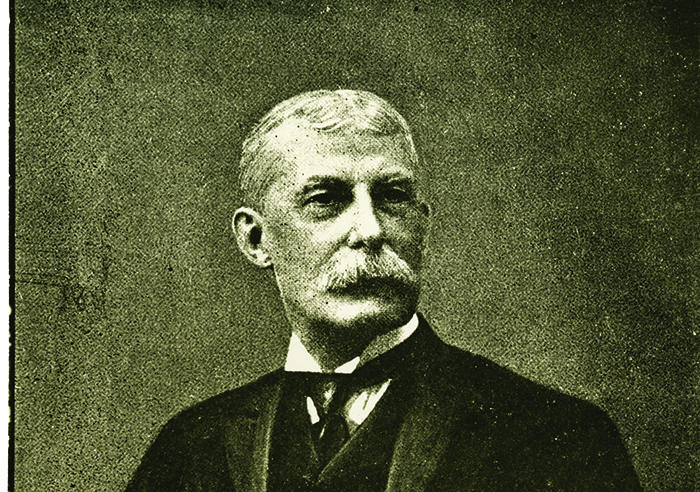There are many ways to describe Henry Morrison Flagler: railroad developer, real estate mogul or partner of John D. Rockefeller in Standard Oil. But one of his greatest titles by far is the “Father of Miami.” After all, he’s credited for turning what had been a swampy coastline into one of the world’s most popular tourist destinations.
It all started when Flagler moved to Florida in the early 1880s after making his fortune with Standard Oil. He landed in St. Augustine in 1883, but was unimpressed with the railroads and hotels, so he decided he would build his own. After much success in St. Augustine, Flagler rapidly took his rails southward through the undeveloped shoreline to Palm Beach, where he built the Breakers hotel and the Royal Poinciana, which was then the largest resort hotel in the world.
Down the palm-lined coast, a widow named Julia Tuttle had watched the transforming influence of the railway and convinced Flagler to take his tracks further south. On April 15, 1896, the first train arrived at the Miami River with a load of building material. Within a few days, Miami’s first hotel, the Royal Palm – now the site of the Epic Hotel – was under construction. Within three months, the town was incorporated with 502 votes. Residents of the new city wanted to name it after Flagler, but he insisted that they name it after the river.
While he’s most celebrated for bringing the railroad to Miami, Flagler also laid out streets, created a large terminal dock, and dredged a canal from the ocean into Biscayne Bay. He also created the water company and Miami’s power company, which became Florida Power & Light. He additionally donated significant funds for schools and churches, and even built Miami’s first hospital.
During Flagler’s time, Miami became known as the Magic City, a name it still proudly touts today. Flagler may have declined the city bearing his namesake, but he will forever be fondly known as the Father of Miami and the region. ↵
Information for this feature is courtesy of the HistoryMiami Archives & Research Center, which is open to the public and contains more than 1.1 million images of Southeast Florida, the entire state and the Caribbean from 1883 to the present. For more information or to visit HistoryMiami, visit historymiami.org.














